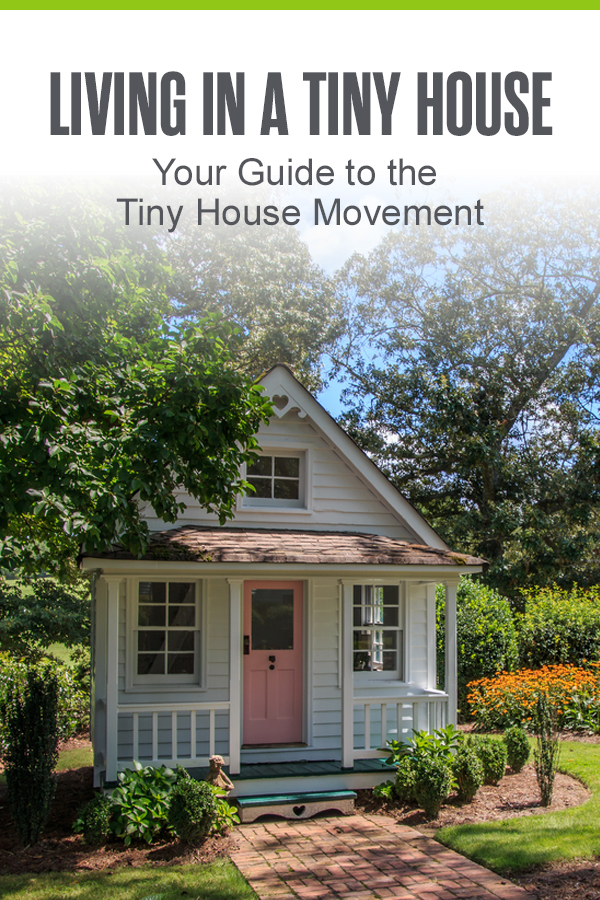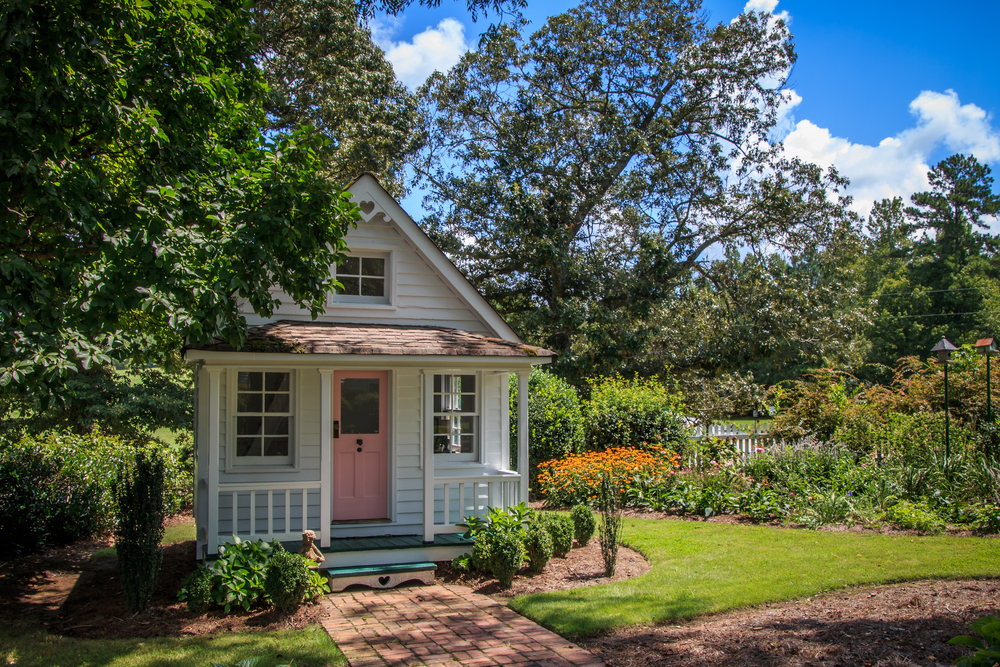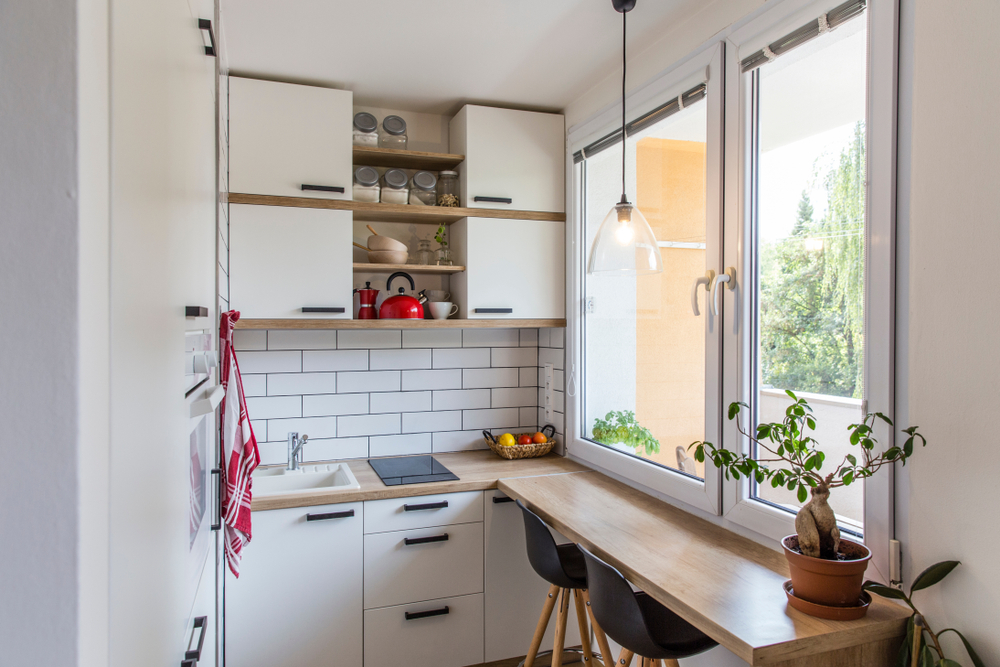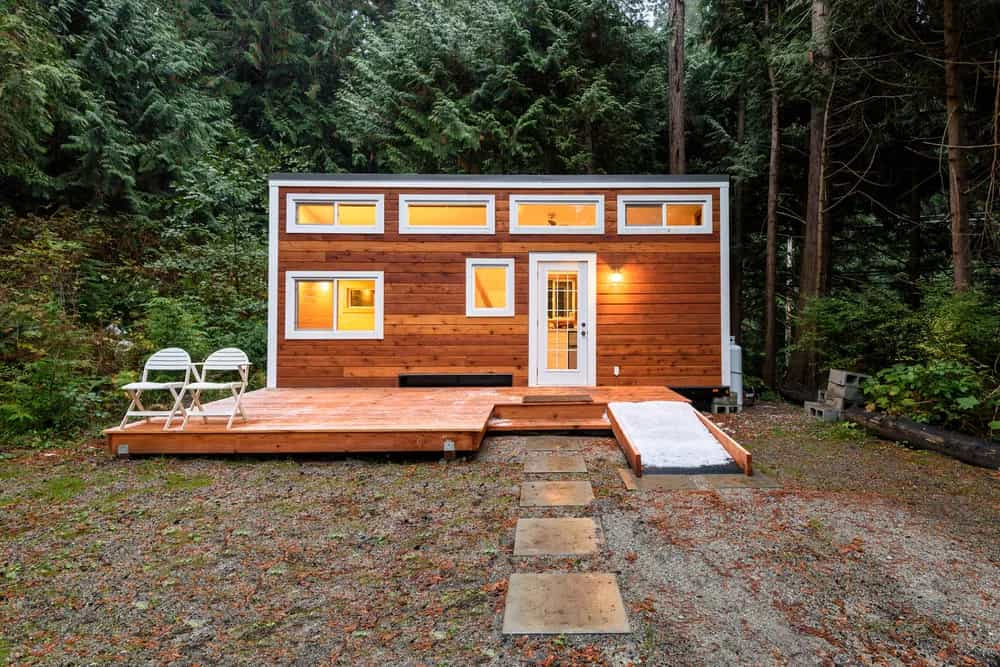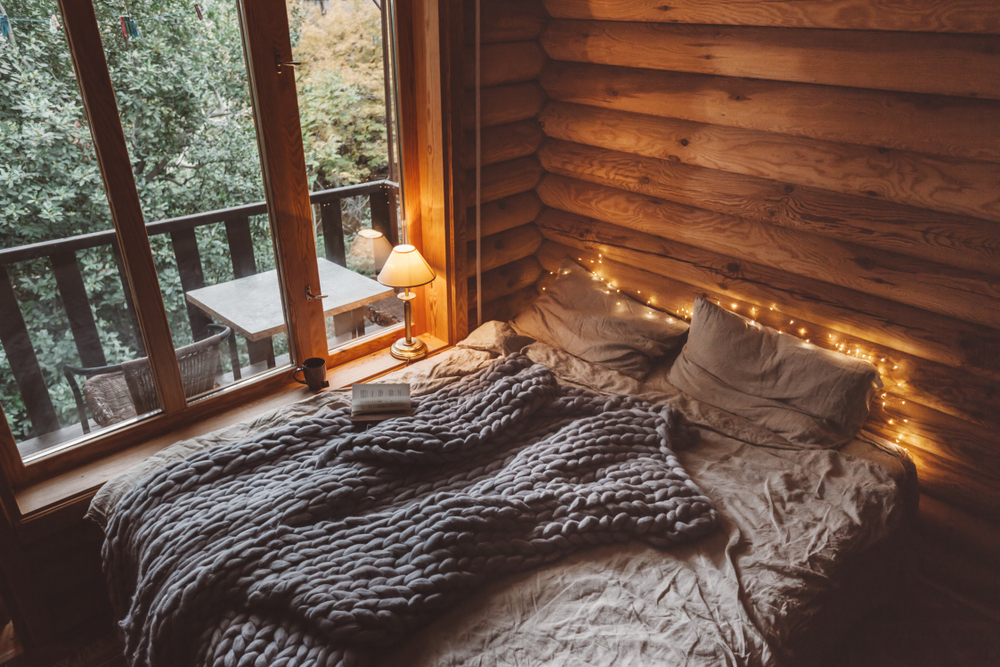You might’ve seen tiny homes pop up on the internet and in HGTV shows like Tiny House Hunters and Tiny House, Big Living as they’ve gained popularity in recent years. From the benefits of buying a mini house to the basics of getting started with tiny house living, check out our guide for the ins and outs of tiny home living!
- What Is a Tiny House?
- What Are the Benefits of Tiny Living?
- How Do I Start Tiny House Living?
- Where Can I Build a Tiny House?
What Is a Tiny House?
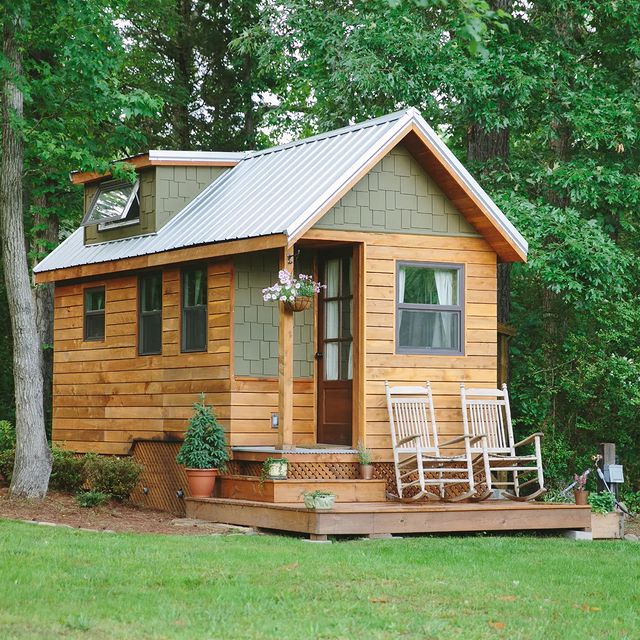
Photo via @windrivertinyhomes
A tiny house is a miniature version of a regular single-family house, including sleeping quarters, a bathroom, and kitchen. The average American single-family home is around 2,260 square feet, while tiny homes have an average size of about 225 square feet (generally under 600 feet). So while there’s been some debate over what’s considered a tiny home and where they can be built, they’re typically designed as either houses on wheels or permanent structures in tiny house villages or tiny home communities.
What Are the Benefits of Tiny Living?
There are plenty of benefits associated with joining the tiny house movement! Some people may use a tiny home as a guest house or in-law suite, but many make a complete conversion to tiny living. Whether you’re looking for more affordable living or an environmentally-friendly lifestyle, you might find that the tiny home lifestyle is a great option for your needs.
Easy on Finances
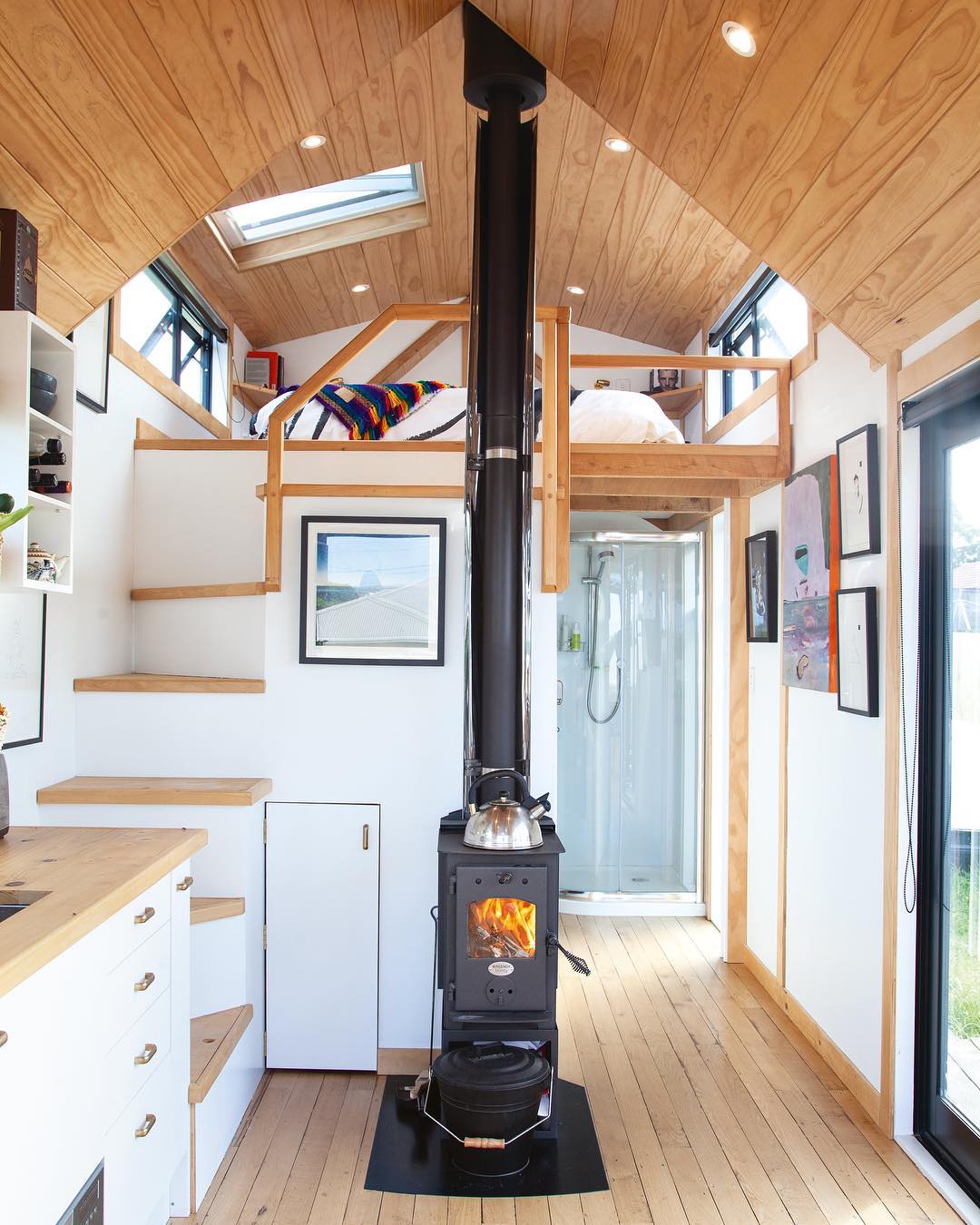
Photo via @camandas_tinyhouse
One of the biggest reasons people embrace tiny home living is that it’s incredibly budget-friendly. The average mortgage in the U.S. costs hundreds of thousands of dollars in total, while tiny homes will cost an average of $30,000 to $60,000. In fact, 68% of tiny home owners don’t even have a mortgage! Plus, since it doesn’t take as much energy to keep such a small area functioning, the cost of utility bills is easier to maintain.
Embrace a Simpler Life
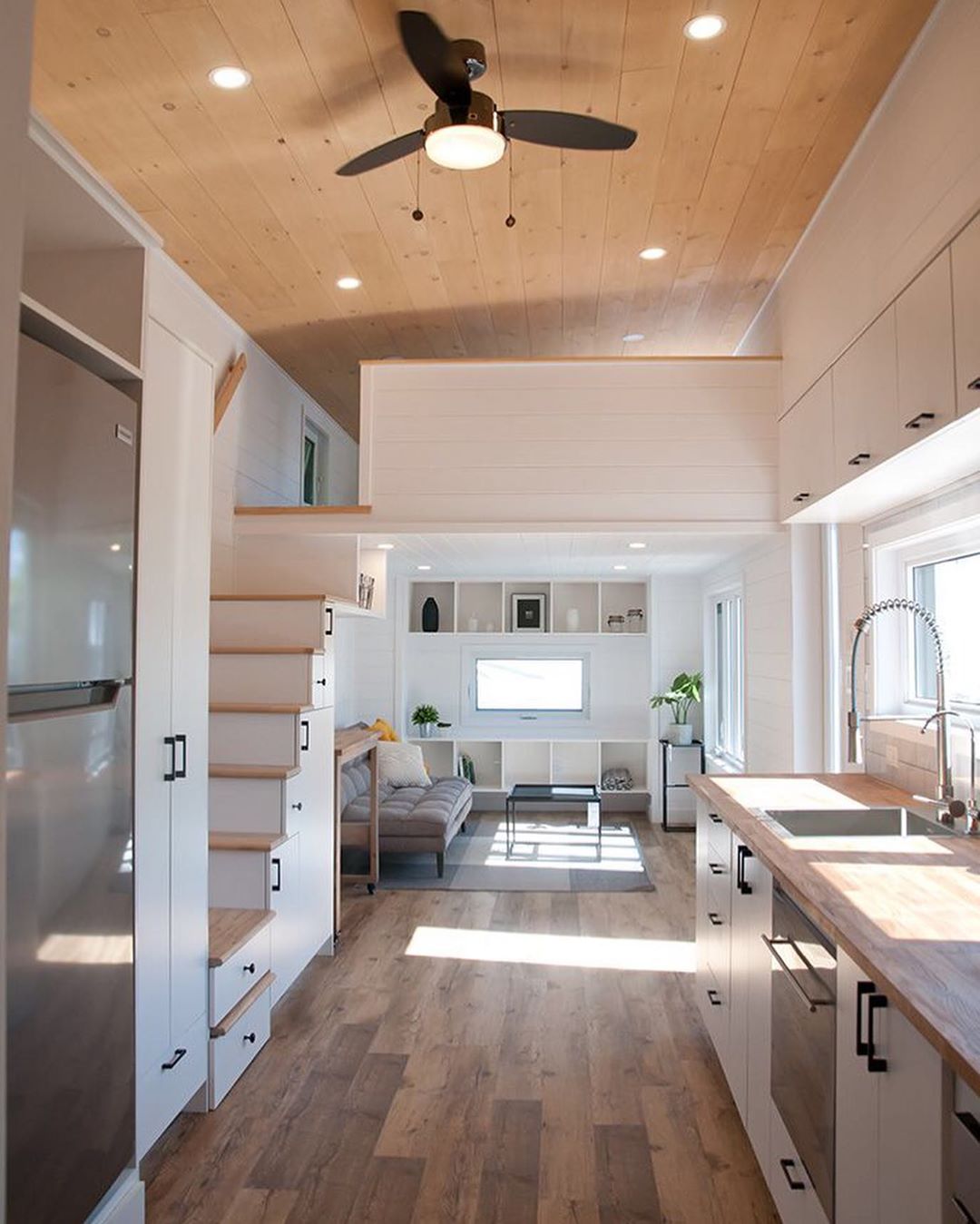
Photo via @mininaliste.tinyhouses
If you prefer to live more simply, downsizing your space is a great way to embrace a minimalist lifestyle. Living in a tiny house with fewer belongings allows you to focus on the important things in your life, helps you avoid making frivolous purchases, and prevents clutter from accumulating.
Better on the Environment
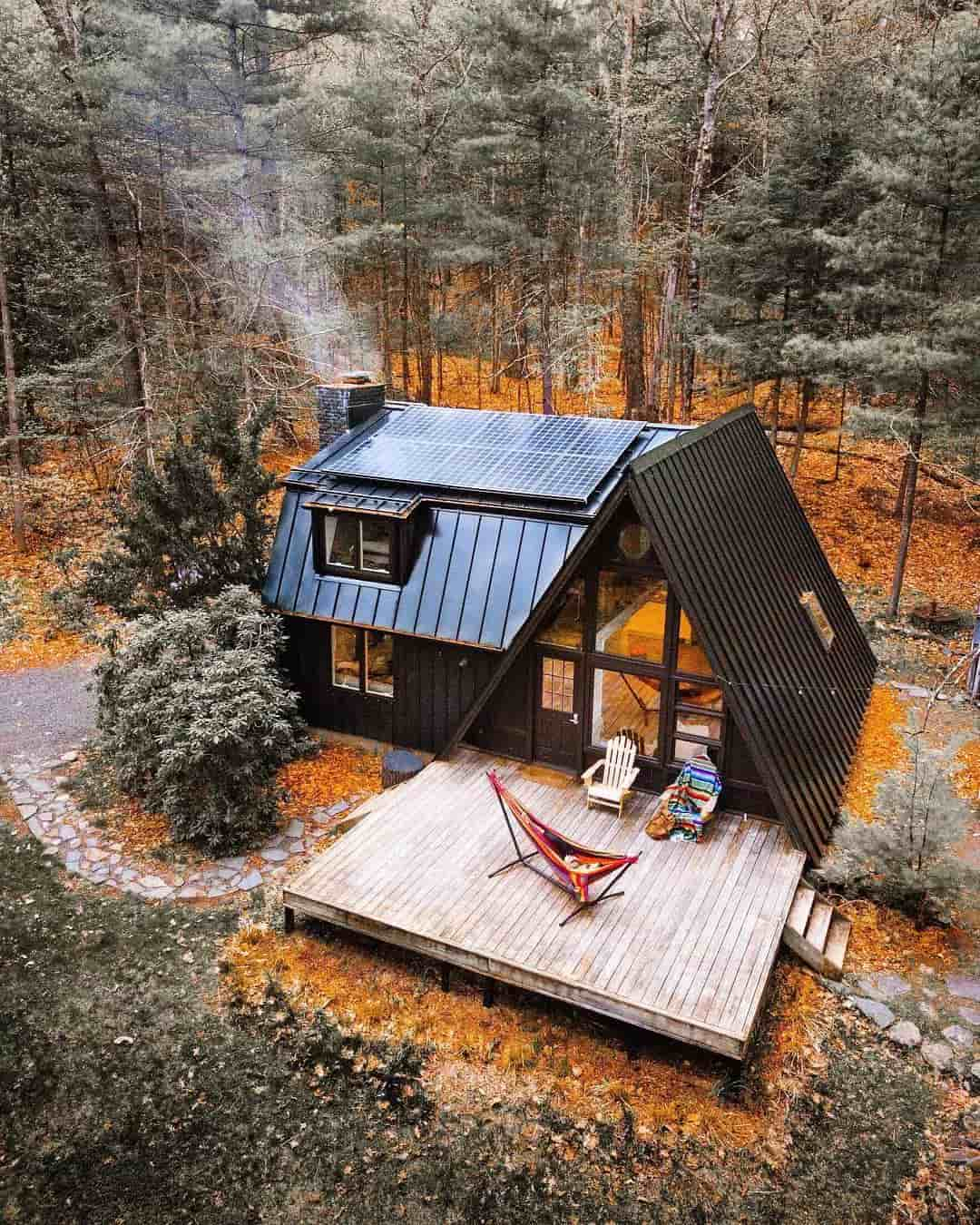
Photo via @ryanresatka
Buying a tiny home can help you live more sustainably! Many tiny home owners use eco-friendly design solutions—like solar panel roof tiles, recycled building materials, and composting toilets—to reduce their carbon footprint and lower utility usage. Plus, building a tiny home involves fewer materials compared to building even a regular-sized house. Self-sufficient and off-grid tiny homes are especially perfect for sustainable living, because they incorporate appliances that use alternative energy.
Freedom to Travel
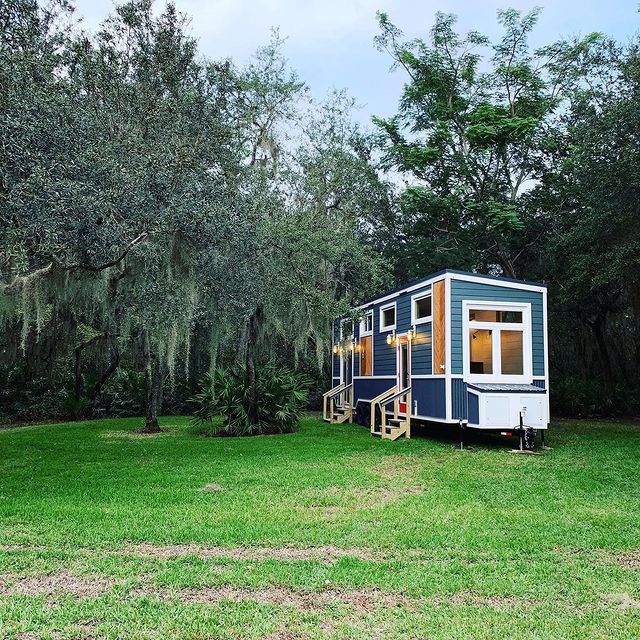
Photo via @movable_roots
Tiny homes—especially ones on wheels—are ideal for people who want to spend their free time traveling and seeing the world. By saving money on mortgage payments and utilities, owners of tiny homes can put more of their budget into travel funds. Maybe one of the best perks to tiny house living is the ability to move your home to wherever your heart desires! Tired of cold, dirty snow? Find a new place to live in the Southeast wetlands or Southwestern desert. Ready to go on an adventure? Pack up your home and move to a place near the ocean or settle in a mountain city.
Less Maintenance
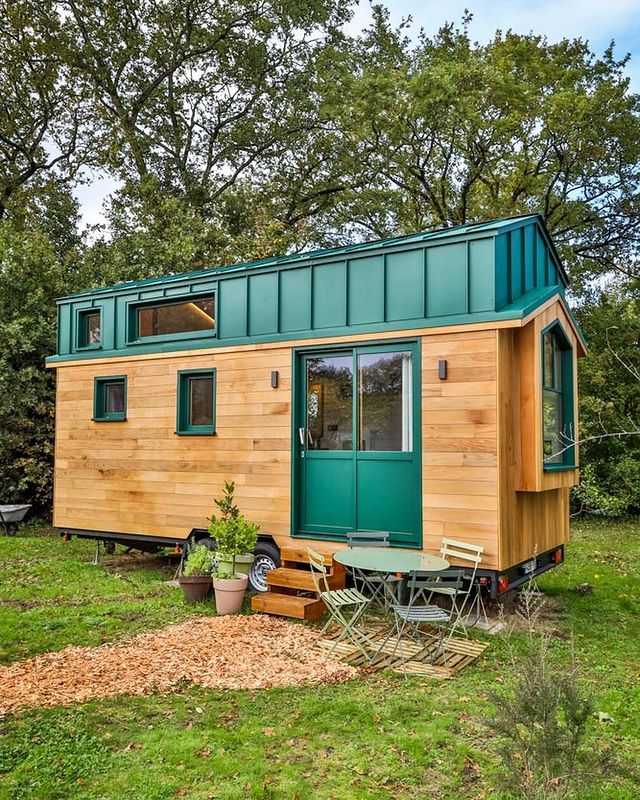
Photo via @livingbiginatinyhouse
Upkeep for a mini home can be easier and more affordable than for an average-sized home! When living in a tiny house, there’s less floor space to vacuum or sweep, fewer walls and windows to manage or replace, and exterior repairs and care should take less time and fewer materials, keeping your maintenance costs lower than those of a larger home. Additionally, mobile tiny homes typically have no lawns to mow and fewer major appliances to replace!
How Do I Start Tiny House Living?
Ready to join the tiny house movement? Follow these helpful tips before taking the steps toward a simpler, smaller life in a tiny home!
Consider Your Lifestyle

Photo via @kimlewisdesigns
What does your day-to-day schedule look like? What do you value in your everyday life? These are things to consider before buying or building a tiny home. If you have a large family, enjoy entertaining regularly, or have pets that need a lot of indoor space, then buying a tiny house might not fulfill your needs. However, if you’re a digital nomad, travel frequently, or want to embrace minimalism, tiny home living could be the perfect arrangement.
Stay in a Tiny Home First
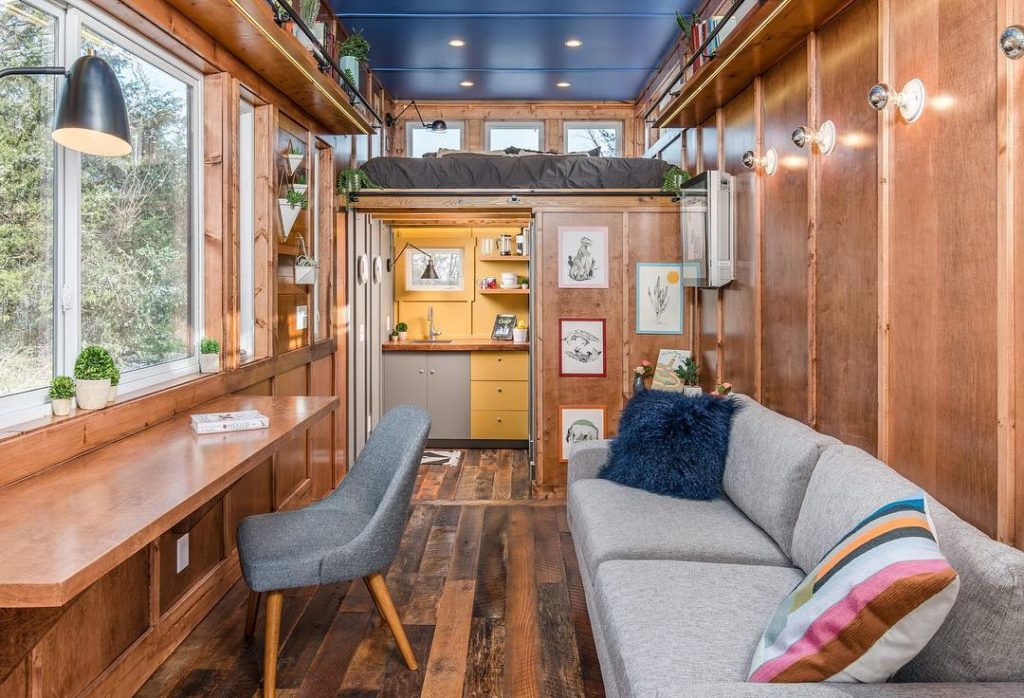
Photo via @newfrontiertinyhomes
You don’t want to put a lot of time and money into building a custom tiny home only to find out that it isn’t right for you. To avoid buyer’s remorse, spend a week or so in a tiny home rental to see if you appreciate tiny house living. This is also helpful if you have a family or are living with a significant other, as you’ll be able to decide if you can live in a small home with others.
Decide on Home Type
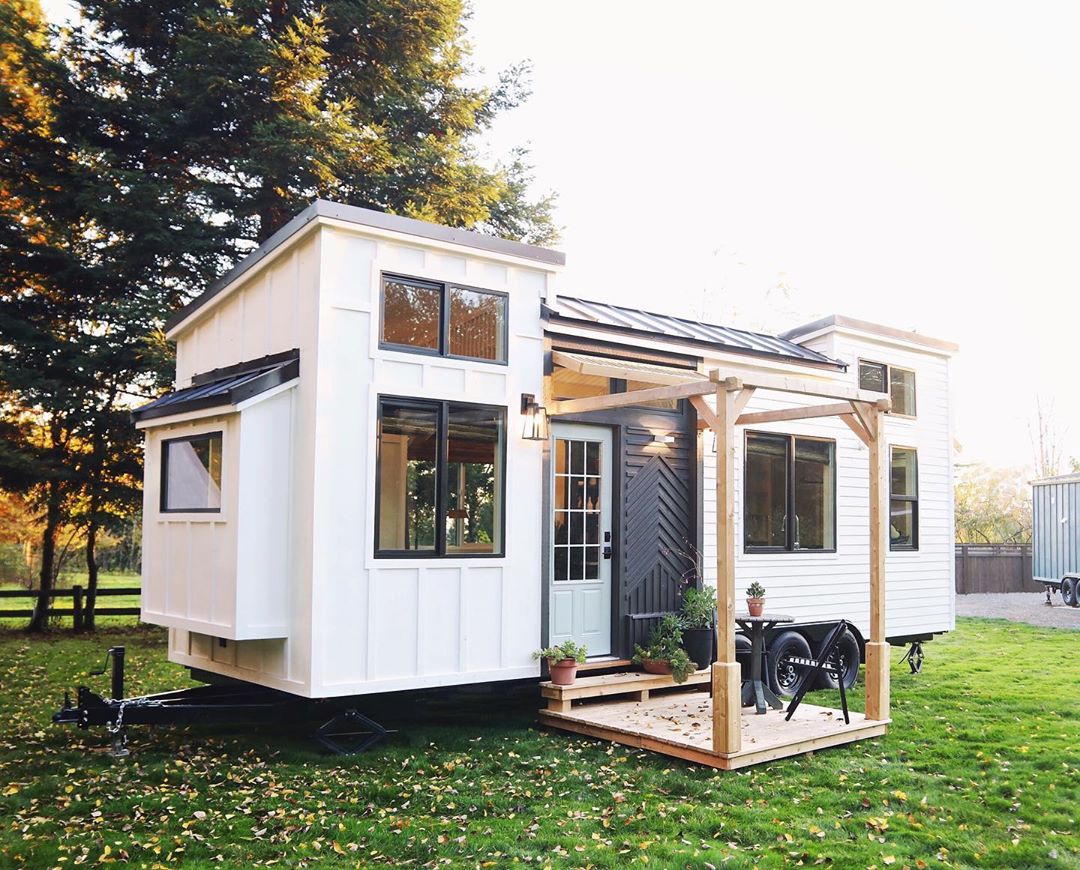
Photo via @handcraftedmovement
Tiny homes come in a variety of styles and shapes. You can pick from tiny homes made from salvaged shipping containers, or get a prefab tiny home on wheels from a popular manufacturer like Tumbleweed Tiny House. Many homeowners opt to build a custom tiny home to fit their needs. While it might seem like you would spend a lot to make a custom home, the cost to build a tiny home is $45,000 on average.
Consider Design Options
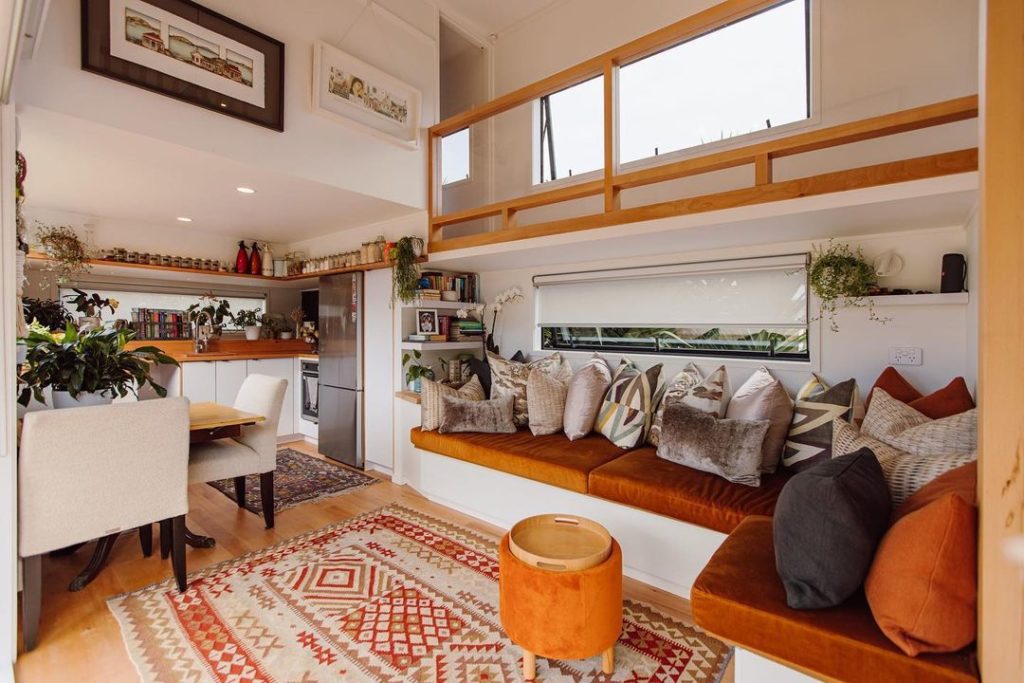
Photo via @shayes_tiny_homes
Once you’re ready to commit to tiny house living, it’s time for creativity to take over! As with any home, you’ll need to decide on the interior design and decor of your tiny house, as well as the exterior home style you want. Small-space living requires you to ensure you have enough room for your belongings, as well as space-saving storage, so you don’t clutter your tiny home. If you’ve opted for a DIY tiny home, decide if you want unique features like a loft, roof deck, or Murphy bed. Finally, make sure you design your mini home with the local climate in mind so the insulation, window treatments, and other weather-dependent design elements are properly installed to keep your home interior comfortable.
Invest in Tiny House Insurance
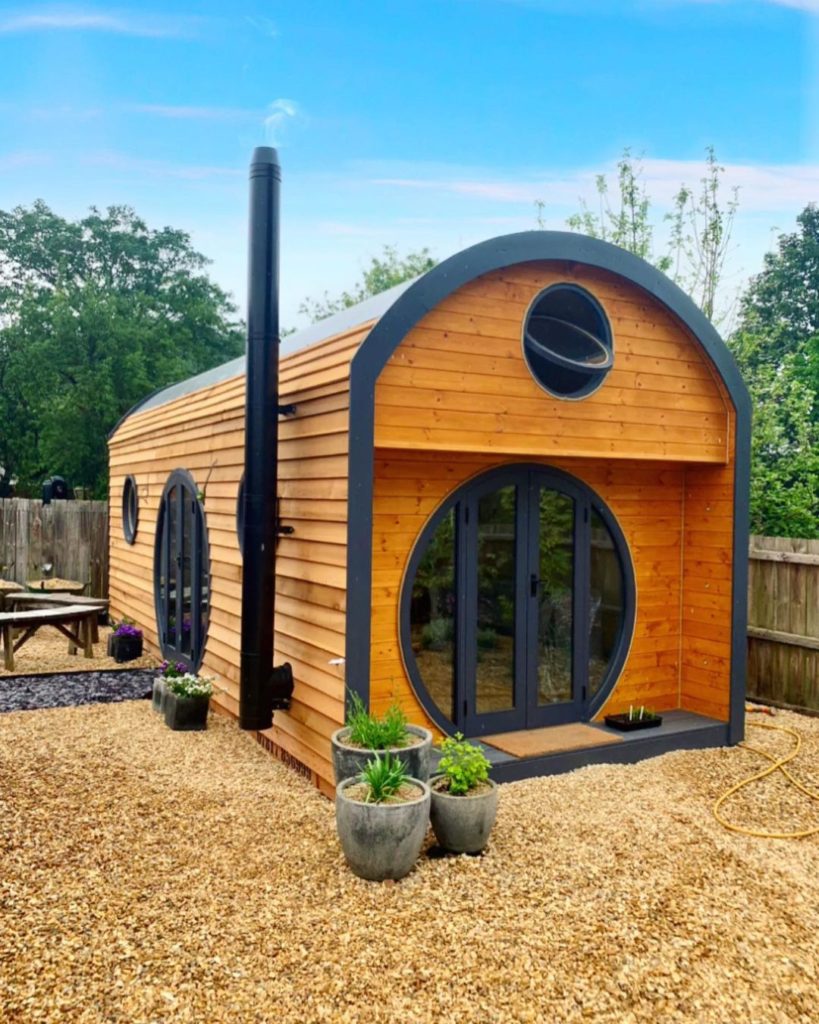
Photo via @myshirehouses
Insurance is a no-brainer when it comes to owning a home, but tiny home insurance is unique. A tiny home on wheels may qualify for RV insurance or mobile home insurance if it’s certified as a recreational vehicle. And tiny house insurance costs around $852 a year on average—with insurance for manufactured tiny homes costing even less than RV insurance—offering you substantial savings in comparison to the average cost of home insurance.
Where Can I Build a Tiny House?
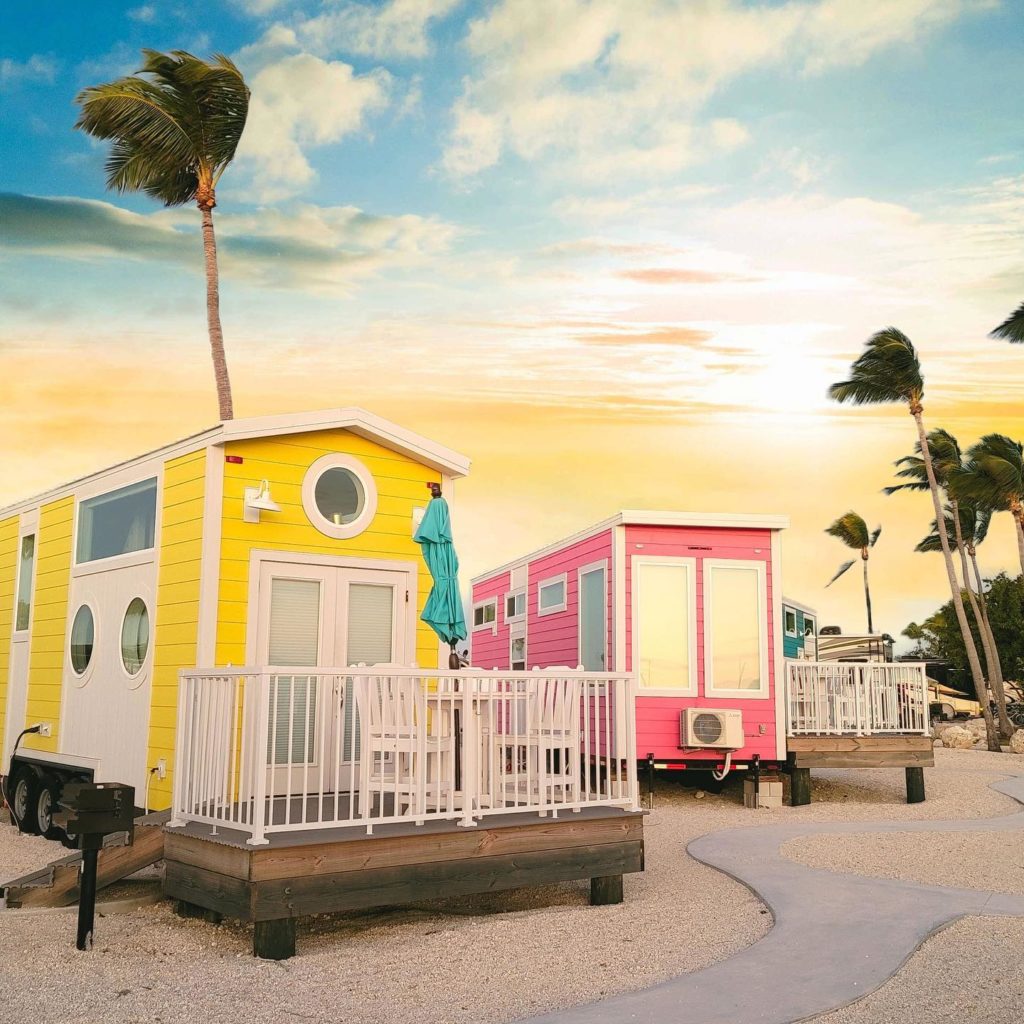
Photo via @petite.retreats
Make sure to research things like the best cities for tiny homes, tiny home communities, and the pros and cons of renting or buying land for your tiny home. Also, it’s essential you consider the local building codes and zoning regulations, which may restrict where tiny houses can be built as permanent structures. Meanwhile, tiny houses on wheels are often classified as a form of RV due to their portability, and typically subject to RV restrictions. In terms of size, a tiny house on wheels can be up to 30 feet long, but must be less than 8.5 feet wide and 13.5 feet tall to ensure it has clearance on the road. A permanent tiny house has more flexibility when it comes to size regulations, as long as it’s built on a four to six-inch thick slab.
***
Need secure storage space for your extra belongings while living in a tiny home? Extra Space Storage has convenient and sustainable storage facilities locations across the country that can help. Find self storage near you!
